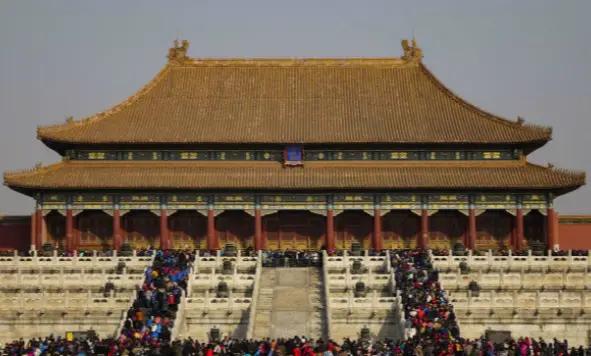The Forbidden City in Beijing is tearing down all the modern buildings and structures on the site of the former imperial palace to better preserve its ancient character, the director of the Palace Museum has revealed.
More than 14,800 square metres of prefabricated buildings and temporary structures that serve as warehouses and offices would be removed over the next three years, director Shan Jixiang told the Beijing Times.
“The Palace Museum is spending the next three years making sure the Forbidden City has only ancient architecture, without a single building of modern construction to affect its ambience,” Shan was quoted as saying on Sunday at a promotional event.
“By doing so, [we] can hand over a magnificent and beautiful Forbidden City intact for the next 600 years,” he said.
The palace was opening up 76 per cent of its 160,000 square metres of ancient architecture to the public this year with three additional passages, up from 65 per cent last year and 52 per cent two years ago, Shan said.
Two of the new passages were along the eastern and western walls of the palace, connecting its southern and northern ends on both sides and adding two extra sightseeing routes to the existing central north-south axis, according to the Beijing Evening News.
The other new passage is a 361-metre glass-walled path cutting through the 13,000-square-metre studio for relic restoration, where visitors can observe the restorers fixing historic artefacts.
The museum wanted to increase the percentage to 80 per cent in the next two years and 85 per cent by 2025, Shan said.
This will be achieved through better management of more than 50,000 square metres of space that was being “improperly used” at present.
As part of this process, the museum is relocating the offices of half of its staff, totaling 1,500 workers.
Workers specialising in maintaining artefacts will move to a new office above an underground warehouse.
Architectural preservation staff will move to the east side of the palace and security departments to the north.
Administrative personnel, including the director and deputy directors of the museum, will move out of the Forbidden City into new offices beyond its walls.
Staff car parks will also be moved outside the palace.
The museum was replacing all the pavements inside the palace with traditional building materials and adding greenery and trees, he said.
The palace first started demolishing temporary and unauthorised buildings three years ago.
The targets back then included over 3,000 square metres of prefabricated temporary buildings as well as over 5,000 square metres of office buildings built in the 1970s and 1980s, the Beijing Times reported at the time.
The Forbidden City, which dominates the centre of Beijing, was home to emperors from the 15th to the beginning of the 20th century.
(SOUTH CHINA MORNING POST)
 简体中文
简体中文



